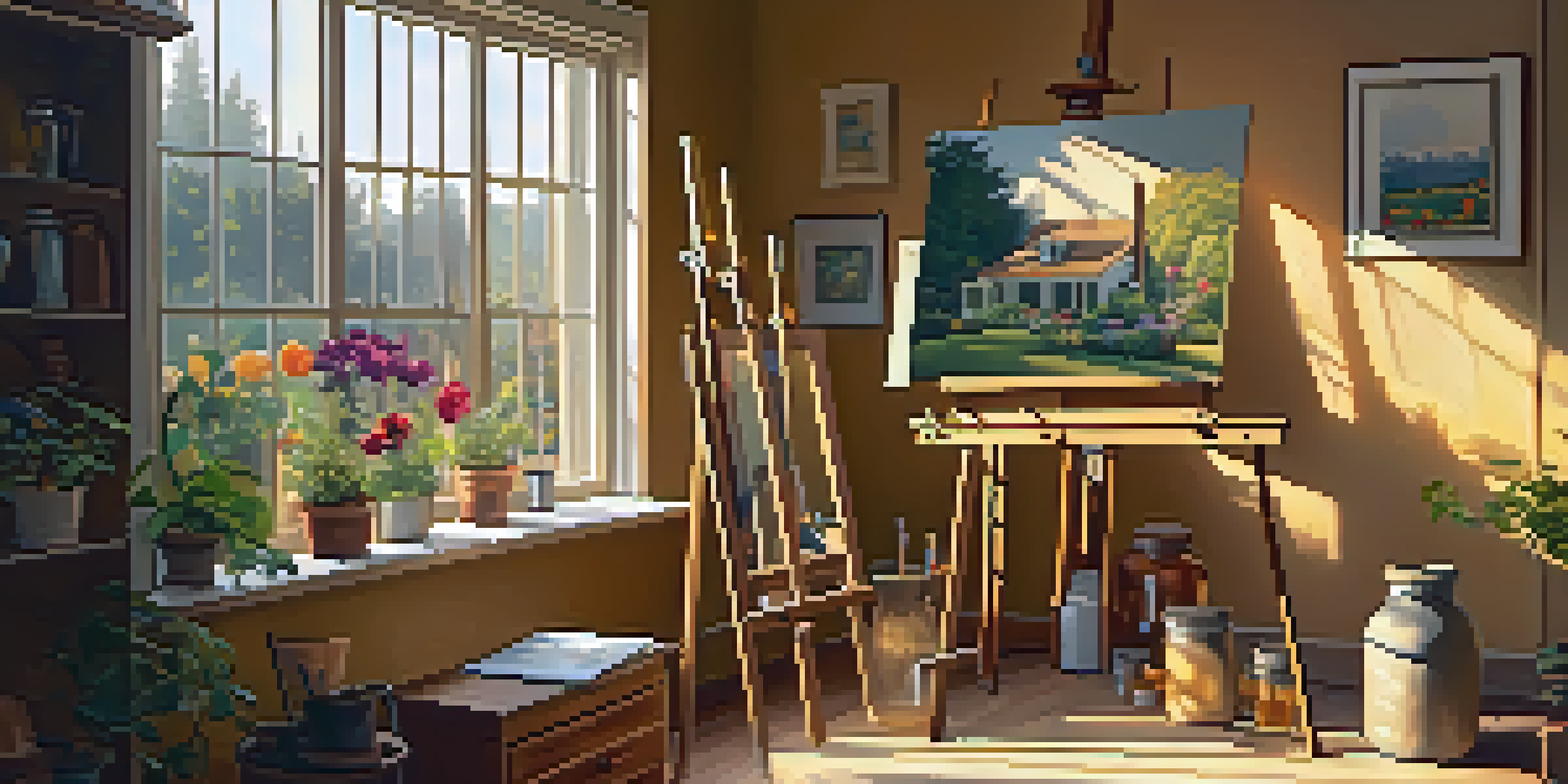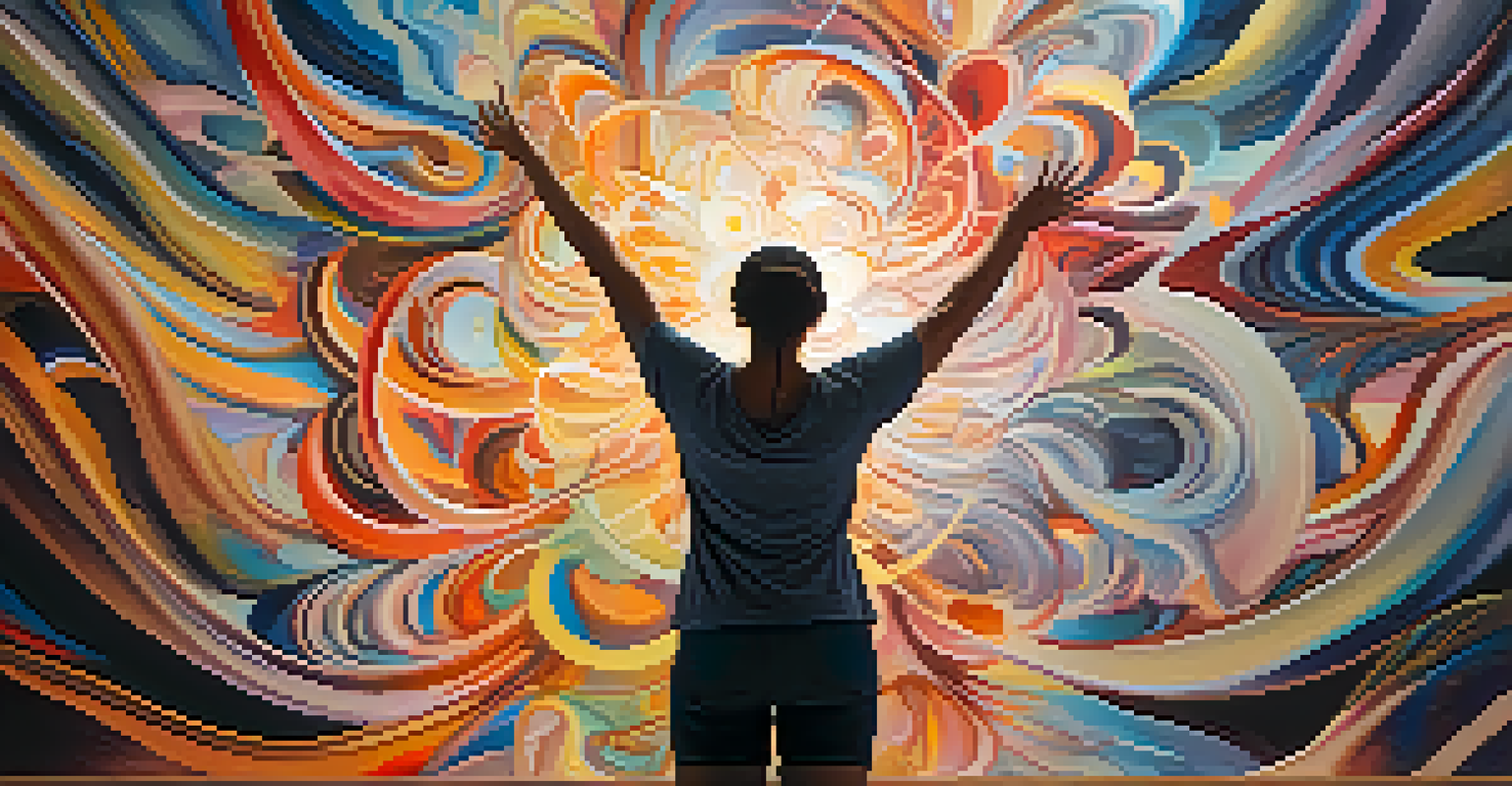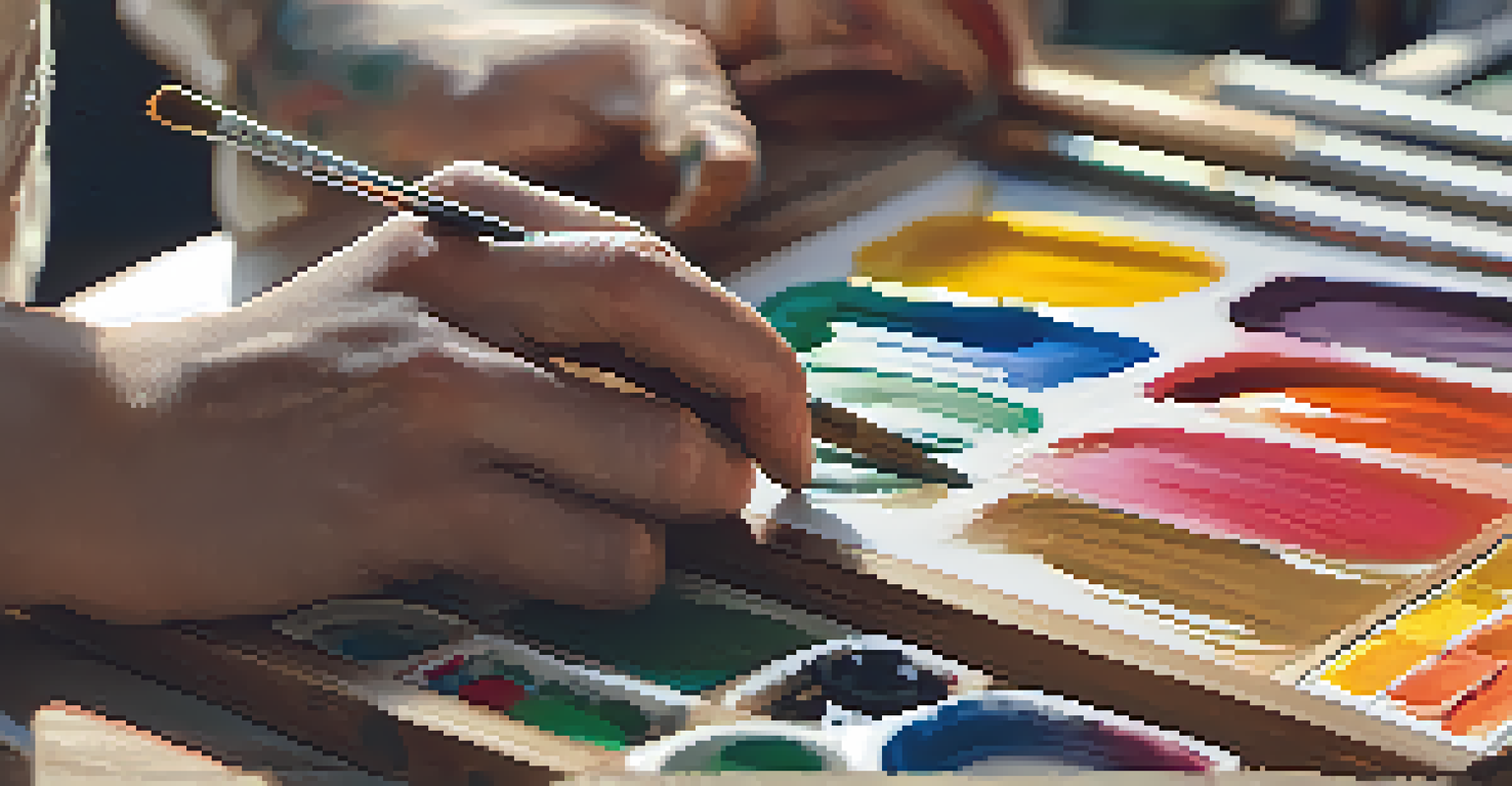Rituals and Their Impact on Artistic Expression in Painting

Understanding Rituals in Artistic Context
Rituals can be defined as structured patterns of behavior, often tied to cultural or spiritual practices. In the realm of art, they serve as a framework that guides creativity. For artists, rituals can range from daily routines to specific practices that invoke inspiration or help in focusing the mind.
Art is the most beautiful of all lies.
By engaging in rituals, artists create a conducive environment for creativity, making the act of painting feel more profound. These practices can help eliminate distractions and enhance the emotional connection to the artwork being produced. For example, an artist might start each session by lighting a candle or playing a specific piece of music to set the mood.
Through these rituals, the artist not only prepares mentally but also establishes a deeper relationship with their materials and the themes they explore. This connection can lead to more authentic and expressive works, as the artist taps into their emotional and psychological states.
Historical Perspectives on Rituals in Art
Throughout history, artists have utilized rituals as a means of channeling their creativity. Ancient cultures often incorporated spiritual practices into their artistic processes, believing that divine inspiration would come through these rituals. For instance, Native American painters might conduct ceremonies before creating art to honor their ancestors and the spirits of nature.

Renaissance artists, too, had their own rituals. Many would bless their canvases or pray for guidance before starting a new piece. This historical context illustrates how the practice of using rituals in art is not a new phenomenon but rather a time-honored tradition that transcends cultures and eras.
Rituals Enhance Creative Focus
Engaging in rituals helps artists create a conducive environment for creativity, allowing for deeper emotional connections to their work.
By examining these historical perspectives, we can understand the deep roots rituals have in artistic expression, and how they continue to inform modern practices. This lineage highlights the enduring power of rituals to inspire and elevate the act of painting.
The Psychological Benefits of Artistic Rituals
Engaging in rituals can have significant psychological benefits for artists. These practices often serve as a form of meditation, helping to clear the mind and reduce anxiety. By establishing a routine, artists can create a safe space that fosters creativity and allows for deeper exploration of their ideas.
Every artist dips his brush in his own soul, and paints his own nature into his pictures.
Additionally, rituals can help artists manage the emotional highs and lows of the creative process. For instance, an artist may find comfort in a specific pre-painting routine that alleviates self-doubt or fear of failure. This consistent practice can lead to increased confidence and a more productive creative flow.
Furthermore, the repetitive nature of rituals can promote a state of 'flow,' where the artist becomes fully immersed in their work. This state is often described as a feeling of timelessness and deep satisfaction, ultimately enhancing the overall quality of the artwork produced.
Rituals as a Source of Inspiration
Rituals can serve as a powerful source of inspiration for artists. By engaging in consistent practices, artists can tap into their subconscious, unlocking new ideas and themes to explore in their work. For example, a painter who takes a daily walk in nature might find that the sights and sounds inspire their color palette or subject matter.
Moreover, rituals can help artists connect with their emotions, which often become the driving force behind their creations. A simple act, such as journaling before painting, can help an artist articulate their feelings, which may then translate into their work. This emotional clarity often leads to more impactful and resonant pieces.
Historical Roots of Artistic Rituals
Rituals in art have a rich history, with ancient and Renaissance artists using them as a means to channel creativity and seek inspiration.
In this way, rituals become not just routines, but vital components of the creative process. They encourage a dialogue between the artist and their inner world, fostering a richer artistic expression.
The Role of Cultural Rituals in Painting
Cultural rituals greatly influence artistic expression, providing a rich tapestry of themes and styles for artists to explore. These rituals can reflect the values, beliefs, and traditions of a community, allowing artists to express a shared identity through their work. For instance, many African artists draw upon tribal rituals, infusing their paintings with symbols and meanings that resonate culturally.
By participating in cultural rituals, artists can deepen their understanding of their heritage and incorporate this knowledge into their art. This connection can lead to works that speak to both personal and collective experiences, enriching the viewer's understanding of the culture represented.
In this way, cultural rituals not only shape the artist's perspective but also create a dialogue with the audience. The art becomes a conduit for sharing stories and experiences, fostering appreciation and empathy across different cultures.
Rituals in Contemporary Artistic Practices
In contemporary art, the integration of rituals continues to evolve, reflecting the diverse practices of modern artists. Some contemporary painters might blend traditional rituals with innovative techniques, creating a unique hybrid approach. For example, an artist might use digital tools while incorporating physical rituals like meditation or grounding exercises to enhance their creative process.
Moreover, contemporary artists are increasingly aware of the societal impact of their work, often using rituals as a means of commentary. By examining the rituals of everyday life, they can challenge norms and provoke thought through their paintings, encouraging viewers to reflect on their own experiences.
Cultural Influence on Artistic Expression
Cultural rituals shape artistic expression, allowing artists to reflect shared values and experiences through their work.
This modern approach to rituals in painting demonstrates that these practices are not static but rather dynamic, adapting to the needs and contexts of today's artists. They remain a vital aspect of artistic expression, driving innovation and introspection.
Conclusion: The Lasting Impact of Rituals on Artistic Expression
Rituals play a crucial role in shaping artistic expression in painting, influencing everything from the creative process to the final piece. They provide artists with a structure that fosters creativity, emotional exploration, and cultural reflection. As we’ve seen, the impact of rituals is both historical and contemporary, transcending time and cultural boundaries.
By understanding the significance of rituals, both artists and audiences can appreciate the deeper meanings embedded within the artwork. This appreciation not only enriches the viewing experience but also encourages a greater connection to the artist's journey.

Ultimately, rituals remind us that art is not just about the finished product but also about the process and the experiences that shape it. As artists continue to innovate and incorporate rituals into their practice, we can expect to see even more profound and meaningful expressions in the world of painting.